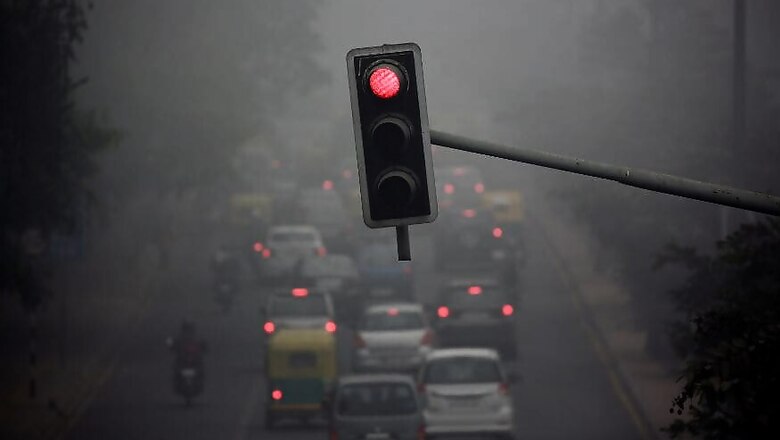
views
New Delhi: The national capital's air quality remained "poor" on Friday and is likely to slip into the "very poor" category by Sunday, officials said.
The overall air quality index (AQI) of Delhi was recorded at 208, which falls in the "poor" category. The city experienced poor air quality for the first time this season on Thursday, the Centre-run System of Air Quality and Weather Forecasting And Research (SAFAR) said.
The Central Pollution Control Board (CPCB) recorded Delhi's air quality in the "poor" category on Friday, with an AQI of 216 and PM10 -- particulate matter 10 micrometers or less in diameter - and PM2.5 as the prominent pollutants.
Particles narrower than 10 micrometres are the most hazardous because they can get deep into the lungs, and some may even get into the bloodstream. The city's AQI is predicted to slip to 239 on Saturday.
The SAFAR said biomass fire counts in Punjab and Haryana have increased significantly over the last two days and will now start influencing Delhi's AQI. The national capital's AQI may start deteriorating from October 13, "towards very poor", it said.
"Late monsoon withdrawal is not good for air quality in north India. During the third and fourth week of October, the temperature will also start to cool. The anticyclone, which persists as part of the withdrawal, along with clear skies and sinking motion will make the atmosphere very stable beneath... means significantly calm surface winds," the SAFAR said.
These factors will lead to stagnant weather conditions -- low wind speed, descending air, and compressed boundary layer -- which favour rapid fine particulate matter formation and accumulation of pollutants, it said.
The situation becomes bad if any additional internal (like firecrackers) or external (stubble burning) emission sources contribute to it. Mahesh Palawat of Skymet Weather, a private forecaster, said the situation is likely to deteriorate rapidly around October 20-22 when the wind will change direction from easterly to northwest and westerly.
Westerly and northwesterly winds bring dust from western regions and smoke caused by burning of crop residue in neighbouring Punjab and Haryana to Delhi-NCR.
Starting October 15, stricter measures to fight air pollution will come into force in Delhi and its neighbourhood as part of the Graded Response Action Plan (GRAP), which was first implemented in Dehi-NCR in 2017.
These measures included increasing bus and metro services, hiking parking fees and stopping use of diesel generator sets when the air quality turns poor.
When the situation turns "severe", GRAP recommends closure of brick kilns, stone crushers and hot mix plants, sprinkling of water, frequent mechanised cleaning of roads and maximising power generation from natural gas.
The measures to be followed in the "emergency" situation include stopping entry of trucks in Delhi and construction activities, and introduction of the odd-even car rationing scheme.


















Comments
0 comment